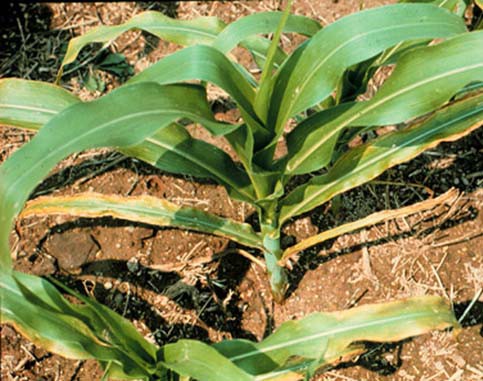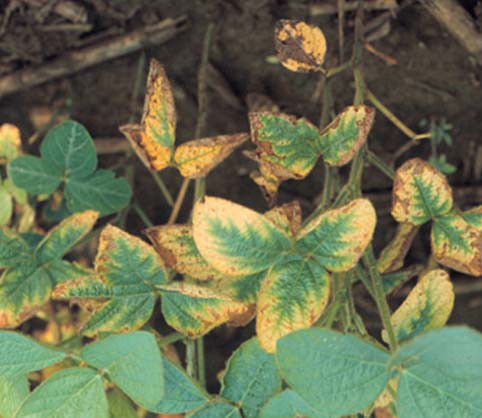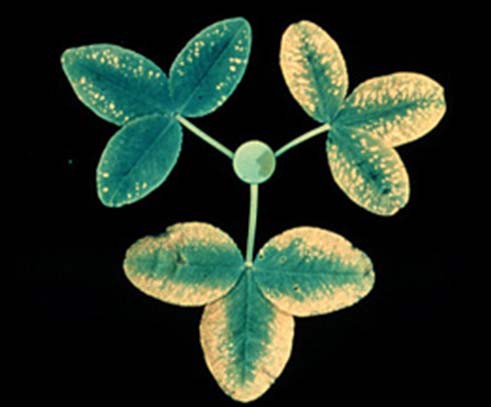By Douglas Beegle, Agronomist
As the crops are finally getting going, potassium (K) deficiency is showing up in some fields. Potassium deficiency symptoms occur on the edges of the lower leaves on most plants.
In corn and soybeans, the symptoms start as yellowing on the edges of the lower leaves. Eventually the edges of the leaves will turn brown and the whole leaf may die. In alfalfa, the symptoms start as small spots on the edges of the leaves, which eventually grow together and end up as yellow and finally brown leaf edges. As the deficiency becomes more severe, the symptoms will progress higher up the plant.
Plants take up about the same amount of K as they do nitrogen (N). Also note that removal of K depends on how the crop is harvested. In spite of the large uptake of K, relatively small amounts of K are removed in grain. However, when the whole plant is harvested as silage and hay crops, a very large amount of K is removed. For example corn grain at 200 bushels per acre removes 60 pounds K2O per acre, but if the same corn crop is harvested for silage, the removal is 240 pounds K2O per acre.
This can make a big difference in the K levels in different field on a farm. Many fields that get a lot of manure in the corn part of the rotation have good reserves of potassium. Fields receiving little manure or that are late in the forage rotation can have fairly low soil test levels and fields coming out of forages often are lowest in K.
As always, begin with a soil test. Even though it may be the last minute, the Ag Analytical Services Lab at Penn State normally has about 2-day turn-around with soil samples. So if you overnight your samples to the lab and have signed up for free web access to your results, you can still have your results in time to make topdressing decisions. Other labs have similar service.
For forage crops low in K, fertilize between cuttings. If you have a forage field with K deficiency, it is especially important to correct this before going into the winter. Potassium is very important for winter survival. For corn or soybeans, if the soil test is low and/or the crop is showing deficiency symptoms, topdressing with potash will be beneficial. Because K is not very mobile, this topdressing will not usually give as good a result as if the soil test was optimum or the K was applied pre-plant, but it will help. Since the soil needs a K application at some point anyway, if it is practical, you may as well apply it now and get what you can out of it for the current crop, and get a start on building K for the following crop.
One thing to keep in mind this year is that wet conditions at planting can result in sidewall compaction, which can produce severe K deficiency. If the young plants are showing K deficiency, but the soil tests are optimum or better, this could be the problem. If this is the case, adding K may not provide any benefit. Hopefully, the roots will eventually get past the sidewall compaction and get the K that is already available in the soil.
 Potassium deficiency in corn.
Potassium deficiency in corn.
 Potassium deficiency in soybeans.
Potassium deficiency in soybeans.
 Potassium deficiency in alfalfa.
Potassium deficiency in alfalfa.






Post a comment
Report Abusive Comment